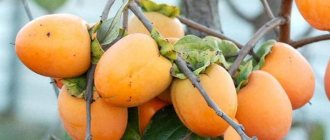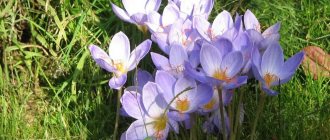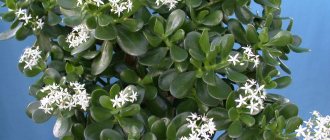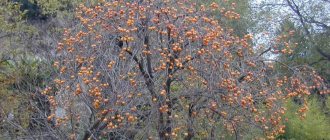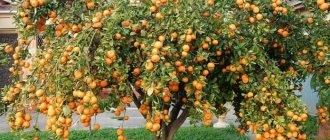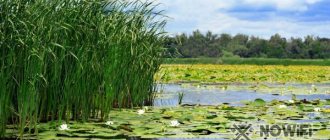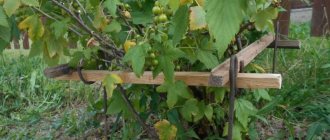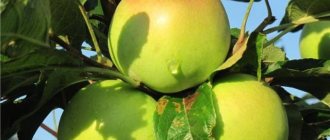Red dogwood berries are familiar to many fans of a healthy lifestyle and aesthetes. Its official name - common dogwood - only misleads and belittles the importance of this useful plant. In fact, its capabilities are magical.
Dogwood is one of the oldest “inhabitants” of the Earth: archaeologists dug up its bones in settlements of the third millennium BC (that is, they are five thousand years old).
Ancient mythology considers one of the Roman hills to be the birthplace of the dogwood. The legendary founder of Rome, Romulus, chose the place to lay the capital of the future empire. And where he stuck the spear into the ground, the first dogwood sprouts sprouted.
The climate turned out to be favorable, and the plant inhabited a vast territory of both hemispheres of the planet. Physicians and traditional healers studied the healing properties of leaves and fruits; the strong flexible dogwood wood became the handles of the swords of Roman legionnaires, material for American Indian spears and Scythian household utensils.
The plant got its name due to the color of the berries: “dogwood” is translated from Turkic languages as “red”.
Variants of the name are dogwood, kyzyl. The second traditional name of the plant is “turf”. At the everyday level, “red doctor”, “Crimean legend”, “devil’s berry” are also in use.
Botanical description
Dogwood is one of the few plants that combines beauty and beneficial properties.
What does it look like
The dimensions and general appearance of the plant are determined by natural conditions, where and how the dogwood grows:
- It can be a bush up to three meters or a tree (twice or three times higher). In the steppes of Crimea or Europe it is often a shrub; in the Caucasus, Transcaucasia, and Transcarpathia it is a tree.
- The mature plant has fissured grey-red-brownish bark.
- Leaves are elliptical (3-7 cm long) with pointed ends. Their front side is shiny, darker than the matte “underside”.
- Bright yellow umbrella inflorescences appear before the leaves. Dogwood blossoms begin in mid-March and last from two weeks to two months. The flowers contain a lot of nectar, which is why bees love them.
- Dimensions of the fruit: externally they resemble a pear or a ball, length 1-3 cm, weight 2-7 g. The dense peel of the dogwood hides the strong juicy pulp. Depending on the variety, the color of the berries can range from yellow to deep purple.
The berries are endowed with a pleasant aroma. Sourish sweetness with tart or astringent notes - that’s what its taste is like. But the astringency and viscosity almost disappear after frost.
Dogwood is the record holder for the duration of fruit ripening - 180-200 days. This property (to bloom earlier than everyone else, but to ripen later) gave rise to the name of the dogwood “devil’s berry”.
The September-October border is the time when dogwood ripens in most regions.
Where does it grow
Dogwood loves warmth, so it grows in forests on the slopes of the Caucasus, Carpathians, and Transcaucasia. It is found in Europe (Central and Southern), China, and Japan. In Russia it thrives in Crimea, the Caucasus, and other southern and central regions. Dogwood shrubs and dwarf trees grow even in rock cracks at high altitudes above sea level (up to 1500 m). Particularly fertile soils are not required; even loams will do. This is a long-lived plant, living for at least a hundred years (sometimes up to 250 years). The first harvest appears after ten years, the final one - in 130-150 years. Dogwood, cotoneaster and barberry are similar, and not everyone understands the difference between these plants. But it is there:
- Cotoneaster is a shrub with beautifully curly branches, egg-shaped leaves and ball-shaped berries resembling a small apple. It is used to create hedges and other decorative forms. However, the berries are inedible.
- Barberry is a thorny shrub with red berries. They are also red, but smaller than dogwoods. Barberry berries have small, very soft seeds (there are also seedless varieties). There is only one seed in dogwood berries – large and hard.
The question: whether dogwood fruits are a fruit or a berry is decided unambiguously. This is a berry
Landing
It is necessary to plant cuttings at a distance of 4-6 m. You can also plant along a fence or near other plants, retreating about 3-4 m from them. It is best to use 2-year-old seedlings, the height of which is 1-1.2 m, and the trunk diameter is about 1.5 cm. Seedlings of older age - 4-10 years - are well accepted.
Before planting dogwood, like any other agricultural plant, you should carefully prepare the soil. It is advisable to do this six months before the planned transplantation of the plant to its “permanent place of residence.” The area needs to be dug up and perennial weeds removed.
Mineral and organic fertilizers are added to the soil at the rate of 4-5 kg of organic matter per 1 m2. Green manure (peas, clover, beans, sweet clover, etc.) can act as organic fertilizers, which should be planted in spring or autumn (depending on the time of planting the dogwood), and then incorporated into the soil.
The seedling is planted in a hole 50 cm wide and 30% deeper than the root bundle (approximate depth - 40 cm). At the bottom of the pit, a mound is formed from soil and organic matter in a 1:1 ratio, and a seedling is placed on top. The roots are straightened by digging them in with earth and carefully compacting them. Then water it abundantly (3-4 standard buckets).
The root collar should be located at a level of 3-4 cm above the soil surface.
If soil preparation has not been carried out, then to plant dogwood you need to dig a hole twice as large. Its dimensions are as follows: depth - 80-90 cm, width and height - 90-100 cm. The excavated soil is mixed with organic fertilizers 1:1 and divided into two parts. A planting mound is formed from one, which should occupy half of the hole. The second part begins to dig in the roots and the plant itself. After which the plant must be watered.
If the seedling is more than 1.5 m, then it will need a support pillar, which must be dug in from the north side.
The last step is mulching. The tree trunk circle is mulched with humus 5 cm thick for spring planting, and 10 cm for autumn planting. A thin layer of soil is poured on top. In regions with severe frosts, you can additionally lay a layer of sawdust or plant debris on top to protect the young plant from freezing.
Dogwood varieties
The number of dogwood varieties in nature exceeds fifty. Almost all are used for decorative purposes. But there are species whose main mission is to delight the taste of berries and make people healthier.
Lukyanovsky
Lukyanovsky dogwood is considered one of the best: frost-resistant, not afraid of drought, and consistently productive. The tree has a round, compact, dense crown. The berries are bottle-pear-shaped, large (6.5-7.8 g). The peel is dark red, almost black in ripe fruits. Dogwood pulp is dense, with a delicate taste and signature dogwood aroma. Once ripe, the berries stay on the branches for almost a month. They can be transported without problems, ripen quickly in warm conditions, and retain their beneficial properties and condition for up to a month.
White
White dogwood is a shrub up to one and a half meters high. Grows in the Caucasus and the Far Eastern region. Frost-resistant variety, undemanding to soil and climate. It is distinguished by the special property of its foliage: in the fall it is juicy red, later turning purple. The flowers are also unusual - they are white, which is why the variety got its name. The berries are yellow, sweet and sour, medium in size.
Semyon
Dogwood Semyon was bred by Crimean breeders. This is a late-ripening variety, ripening by September. The berries are pear-shaped, dark red, with a hint of black. The peel is dense, glossy. Weight 7-8 g. The pulp of the berries is dense, aromatic, sweet and sour. Resistant to frost (up to -20°C), steppe dry winds, diseases, and pests. The fruits retain their beneficial properties for a month.
Vyshgorodsky
Dogwood Vyshgorodsky is one of the earliest, ripening in the first half of August. The berries are round-elongated, red, shiny, weighing 4-6 grams. The pulp is juicy, dense, sweet with pronounced sourness. The bone is small. Frost resistance down to -30°C, disease resistance above average. Suitable for cultivation in all regions of Russia, except the Far North.
Amber
Amber dogwood is recognized by its almost transparent, medium-sized (3-4 grams) amber-yellow berries. Ripe fruits have soft flesh with a slightly tart aroma. The seed is visible inside the berry. Ripe fruits are very sweet. This is what they look like in September. However, they do not stay on the branches. To avoid shedding, the berries must be harvested three to four days before full ripeness (ripen during storage). It differs from red-fruited varieties in its increased content of sugars and pectins.
Wild
Wild (or wild dogwood) grows in warm regions: from Transcarpathia to the Caucasus and Crimea. It blooms in early spring with bright yellow flowers collected in umbels. Small fruits ripen six months after the appearance of the ovary.
Kyiv
Kiev (or more precisely Starokievsky) dogwood is recognized by the shape of the fruit, reminiscent of a bottle or a slightly curved eggplant. Bottle dogwood is not afraid of drought, frost (down to -40°C), and is unpretentious to soil. Ripens by the end of August - the first half of September. The berries are large, up to 6-7.5 g. When ripe, the peel is dark red “varnished”. The pulp is thick red, light red closer to the middle, juicy, aromatic. They retain their beneficial properties fresh in the cold for up to a month.
Coral
The ripening time for dogwood varieties Coral is average - by the beginning of September. The berries are small, up to 4 grams, round. Fully ripe berries are very sweet, their taste is more reminiscent of slightly unripe cherries than dogwood. Externally, the berries look like small cherry plums - the peel is pink with an orangish tint. The flesh is pink, translucent, the bone is visible through it. The harvest needs to be harvested a couple of days before full ripening. Otherwise the berries will fall off. But Kizil miya is not the name of the variety. This is how the term “licorice” sounds in Uzbek. This is a herbaceous plant of the licorice family.
Dogwood in the gardens of Belarus
Separately, it is worth mentioning the cultivation of heat-loving dogwood in Belarus - the local cold climate requires a special approach, in particular, it is better to start planting seedlings in the spring, so that they have time to get stronger by winter. Those plants that are formed in the form of a bush survive the winter best, but even they need to be covered if in winter the average temperature drops below 30 degrees below zero. To do this, the shoots are bent to the ground and the bush is covered with spruce branches.
As a garden and berry crop, the main purpose of which is fruiting, the following early varieties of dogwood, ripening at the end of summer, have proven themselves well in Belarus:
- Coral Brand. Unusual dark pink berries with an orange tint ripen in the second half of August.
- Elegant. The first harvest is already at the end of July. The cherry-colored berries are shaped like a bottle with a narrow neck and do not crumble until frost. It is characterized by its short stature (no more than 2 m in height).
- Mid-season variety Vladimirsky. One of the largest-fruited dogwood species, the weight of one almost black berry is about 10 g, the shape is round, slightly flattened. Ripening occurs in the third ten days of August.
Chemical composition
The bark, leaves, and fruits of dogwood are rich in vitamins, microelements, and other nutrients beneficial to humans. Vitamins: A, B, C, E, R. Macro- and microelements:
- iron;
- potassium;
- calcium;
- magnesium;
- phosphorus;
- sodium.
Microdoses contain selenium, zinc, chromium, and fluorine.
Other nutrients:
- glucose;
- tannins;
- fixed oils;
- organic acids (malic, succinic, nicotinic);
- pectins;
- alimentary fiber;
- fructose;
- flavonoids;
- phytoncides;
- essential oils.
Caloric content and chemical composition of berries
Irga description, cultivation and beneficial properties
Dogwood berries are low-calorie products, which are completely free of fats (only 45 kcal per 100 g of fruit) and are dominated by carbohydrates, which carry energy value.
Important! In addition to the main components, the berries contain tannins (they give the tart taste), which can resist many inflammatory processes in the body.
BJU of fruits (per 100 g) is:
- proteins - 1 g;
- fats - 0 g;
- carbohydrates - 10 g.
Such characteristics make it possible to include berries in the diet menu. The composition also contains a high content of vitamin C, which is a stimulant for the immune system, and vitamin PP, which has a positive effect on the human cardiovascular and digestive systems.
Among the useful substances there are micro- and macroelements, such as K (potassium), Mg (magnesium), Ca (calcium), P (phosphorus), Fe (iron), Na (sodium), S (sulfur), Se (selenium) , Zn (zinc), as well as pectin, malic acid and disaccharides.
What are the benefits of dogwood for the body?
Traditional medicine has studied and used the beneficial properties of all dogwood nutrients. This is an essential component of the diet for some diseases.
For women
This is a proven useful ladies' ally. In addition to the general effect, the properties of dogwood help solve purely female problems. All parts of the plant are useful in cosmetology:
- The pulp of the berries makes a moisturizing and vitaminizing mask for the face and hair.
- The cream, enriched with beneficial berry extract, tones and moisturizes the skin. At the same time, it cleanses pores, removing dark spots, oiliness, and smoothing out wrinkles.
- The bark is brewed for anti-inflammatory masks.
- Rinsing with dogwood decoction makes hair strong, silky, and relieves itching and dandruff.
- Ground bones are a healthy, wonderful and safe body scrub.
You can add dogwood juice or pulp to store-bought cream. The berries are endowed with antispasmodic properties, therefore they are useful for women during painful periods.
For men
Men are more susceptible to stress, experience more physical activity, and neglect the prevention of seasonal viral infections. When consuming dogwood berries, the beneficial properties will appear as follows:
- Toxins will be removed, which is useful in case of poisoning or working in an enterprise with harmful conditions.
- The functioning of the genitourinary system will improve.
- Potency will increase.
Contraindications are universal: problems with the stomach, nervous system, constipation.
Features of cultivation
The dogwood shrub is an absolutely unpretentious plant, the care procedures for which are kept to a minimum:
- timely watering - several times a month, at the rate of 8 liters per bush;
- soil fertilization - mandatory application of complex fertilizer every spring;
- weeding - carried out as the tree trunk circle becomes overgrown with weeds;
- loosening the soil - after each watering, to avoid the formation of a crust on the soil.
Systematic pruning and treatment of plants against diseases and pest invasions is also recommended. You should know that in the first few years of a crop’s life, the loosening procedure is carried out extremely carefully, no deeper than 10 cm. This is explained by the superficial location of its root system (at a depth of about 30 cm).
Important! The daily norm of fruits is 200 g.
Like every bush, dogwood needs thinning and removal of excess growth. During the same period, the soil under the plant will require additional fertilization with nitrogen, which promotes the growth and development of the above-ground part of the plant, as well as the addition of organic matter - manure or humus. With the beginning of fruiting on the bush, it is necessary to carry out only sanitary pruning, which involves the removal of broken, diseased, small or thickening branches.
Video: pruning and growing dogwood
Health benefits of dogwood berries
The benefits of dogwood for the human body have been known for several centuries. The beneficial effects of berries and preparations made from them on the body are multifaceted:
- Normalize blood pressure and inhibit the development of sclerosis.
- They remove toxins, so they are used in cases of poisoning or the risk of poisoning.
- Tea made from the bark or pulp relieves inflammation (including joint inflammation) and cures colds.
- They normalize fat, water, and salt metabolism, which accelerates weight loss.
- Increase hemoglobin concentration, reduce sugar.
- They restore the functions of the liver and kidneys, strengthen the walls of blood vessels, and enhance the production of secretions by the pancreas.
- Treat eczema, rashes, and other skin diseases.
- Eliminates indigestion, heartburn, increases stomach acidity.
Dogwood berries are endowed with the property of strengthening the immune system and increasing appetite, therefore they are useful for children.
They are prescribed for obesity, anemia, anemia, and diabetes.
Dogwood for diabetes
Dogwood is useful for diabetes or a predisposition to it. Berries neutralize the effects of sugar and do not increase the concentration of glucose in the blood. Activate the pancreas, which facilitates digestion. For those suffering from diabetes, diluted fresh berry juice will be useful:
- It is squeezed out of fresh washed berries, water is added (about 1/7 of the volume).
- If the acidity is not increased, it is not necessary to dilute the drink with water.
- Initial course of treatment (10 days): drink half a glass three times a day, half an hour before meals. After a week's break you can continue.
- If the body reacts calmly, the dosage is doubled.
This is a folk remedy useful for lowering blood glucose levels. In the case of type 2 diabetes, the use of compote, infusion, or decoction of fresh berries is simply necessary.
The benefits of dogwood for weight loss
The properties of dogwood are useful for people trying to get rid of extra pounds. All thanks to the symbolic calorie content of the berries. They also help the gastrointestinal tract process other foods. It is more useful to use a decoction or compote. The drink is prepared as follows: 150 grams of berries are boiled for a couple of minutes in 1.5 liters of water. Without sugar (it is permissible to add a little honey). Caution is required from older people.
Is it possible to take dogwood during pregnancy and breastfeeding?
It is possible and necessary. Berries are rich in beneficial nutrients, the value of which is invaluable:
- The berry maintains mineral and vitamin balance, strengthening the immune system.
- Saturates the blood with iron, preventing anemia and fatigue.
- Normalizes digestion, preventing constipation - a problem for most pregnant women.
- Able to slow down or overcome infection, colds, acute respiratory infections, high fever.
- Replaces medications that are undesirable during pregnancy or breastfeeding.
Infants from the age of three months can be given dogwood decoction. The child will become stronger and will digest food without colic or distress. His bones will grow faster and become stronger. The main thing is not to overdo it. Start with a couple of berries for yourself and a couple of drops of juice for the child, observing the reaction of the child and your body.
Possible diseases and how to cope with them?
Varietal specimens of dogwood are extremely rarely affected by pests, but young plants are sometimes attacked by powdery mildew. Treating it with any fungicide will help you cope with it, and timely sanitary pruning will help prevent it.
Another disease that can affect crops is rust. In a plant affected by it, yellow spots appear on the surface of the leaves, which can be gotten rid of by treating the bush with Bordeaux mixture. Also, the snail scale insect can occasionally settle on dogwood. It is destroyed by spraying with lime.
Useful properties of dogwood seeds
Dogwood seeds are also endowed with beneficial properties. A third of their composition is healing oils:
- they promote wound healing;
- suppress inflammation;
- destroy bacteria.
They are ground to powder and used to treat gastrointestinal tract, diarrhea, and hemorrhoids. Positive dynamics are observed from the first or second dose of the drug. Dried fruits with seeds are useful for treating hemorrhoids (eat 10-20 berries daily).
There are no side effects; the properties of the powder “do not conflict” with any traditional drug from the pharmacy. Therefore, it can be used in parallel with medications prescribed by a doctor.
People for whom caffeine is contraindicated will benefit from the kernels of the seeds. They are roasted, ground and used as a coffee substitute.
Cultivation in different regions
Many gardeners wonder whether dogwood grows in central Russia. Of course, yes, since at the moment there is a large variety of varieties and it can be grown in many areas. It is recommended to take the following factors into account:
- The fruits need quite a long time to ripen, so for the northern regions you should choose varieties with early ripening (“Elena”, “elegant”, “Babylonian”).
- The optimal time for planting dogwood in the southern regions is considered to be mid-October. In areas further north, such events need to be organized earlier.
- Subtropical climates do not require special winter shelter. The exception is seedlings under 5 years of age. For them, it is better to mulch the roots, creating a 15 cm layer of peat or humus around the bush. In regions where a temperate climate prevails, winter can be either quite warm or abnormally frosty. To avoid freezing, the bushes are covered with cardboard boxes of suitable size, filled with shavings, sawdust or straw. A couple of branches are tied to adult plants and the bush is wrapped in several layers of covering material that allows air to pass through. For northern regions, it is recommended to choose frost-resistant varieties (“firefly”, “elena”, “alyosha”).
Collection and storage
Dogwood is a seasonal berry, so gourmets and those in need of it as a healing remedy should take care of the preparation of raw materials:
- The bark is harvested in early spring, leaves - in June-July, roots - in late autumn. The berries are picked slightly unripe. They will fit perfectly in a box or basket, retaining their beneficial properties.
- For long-term storage, fruits are collected at the beginning of ripening. Distribute into medium-sized baskets, leave at a temperature of 0 - + 3°C and average or lower humidity.
- To dry the berries, they are laid out in a thin layer on paper without printing ink, indoors with ventilation or outdoors in the shade. It is acceptable to use a low-heat oven (50-60°C).
- The berries can be picked after the first frost - their taste will improve, but their beneficial properties will not be affected.
- It is advisable to freeze whole berries by first washing, drying and distributing them into small containers.
In the cold (in the cellar or refrigerator), fresh berries retain their beneficial properties for a maximum of two weeks, frozen - for months.
Planting and caring for dogwood
- Planting: in autumn, at the very beginning of leaf fall.
- Flowering: April-May.
- Lighting: partial shade.
- Soil: rich in lime. Groundwater on the site should be no higher than 1.5 m.
- Watering: moderate and regular.
- Fertilizing: in the first half of the growing season, the nitrogen component should predominate in the fertilizer, in the second half - the potassium component.
- Pruning: regular, during the dormant period - late winter or early spring.
- Reproduction: green cuttings, layering, grafting or seeds.
- Pests: snail scale insects and multicolored caterpillars.
- Diseases: rust, powdery mildew, leaf spot.
Read more about growing dogwood below.
Dogwood compatibility with other trees
If garden crops are placed incorrectly on a plot, their growth slows down, diseases appear, and productivity decreases. According to experts, dogwood goes well with cherry, apple, pear, and apricot. It grows well in shaded areas and does not disturb the “neighbors.” However, if the bush turns into a tree, problems arise. Without proper care, dogwood can “strangle” a fruit tree. The nut is toxic to almost all crops, so it needs to be planted separately. Different varieties of dogwood grow well in one area.
Why doesn't dogwood bear fruit?
The reasons for the lack of berries on the bushes are different.
- The planted plants are clones, planted from one root.
- There are no pollinating bees during flowering.
- The soil lacks nutrients or has an excess of them.
- The plant is experiencing waterlogging.
- The soil is too dry.
- Unsuitable climatic conditions, insufficient growing season.
During dry summers, the soil should not be fertilized. The salt concentration is already increased due to the lack of water. Minerals draw moisture from the roots, which leads to delayed fruit ripening or lack of harvest.
